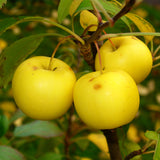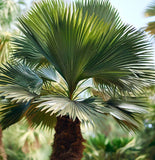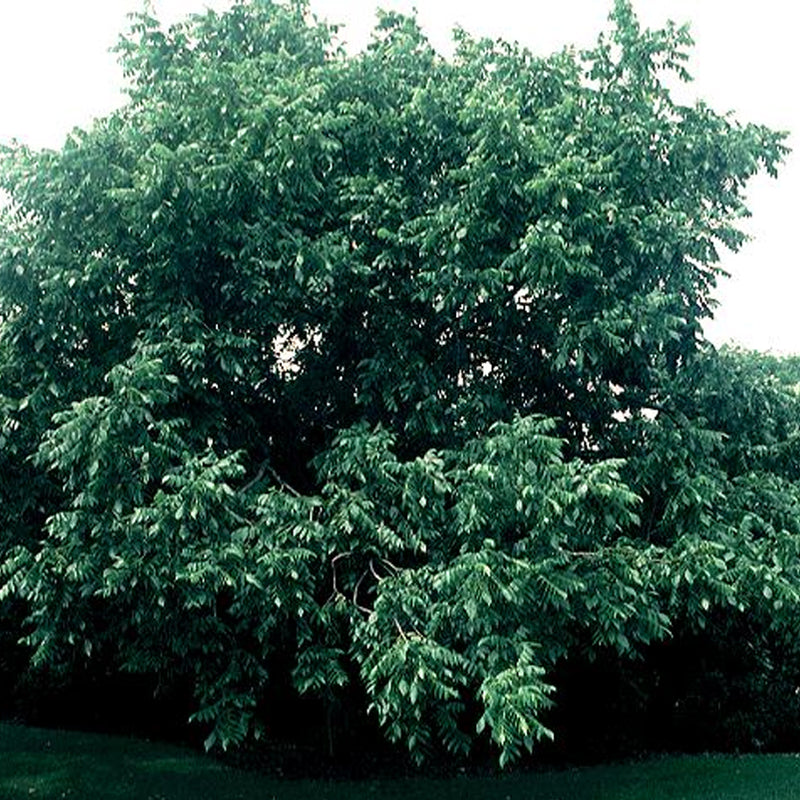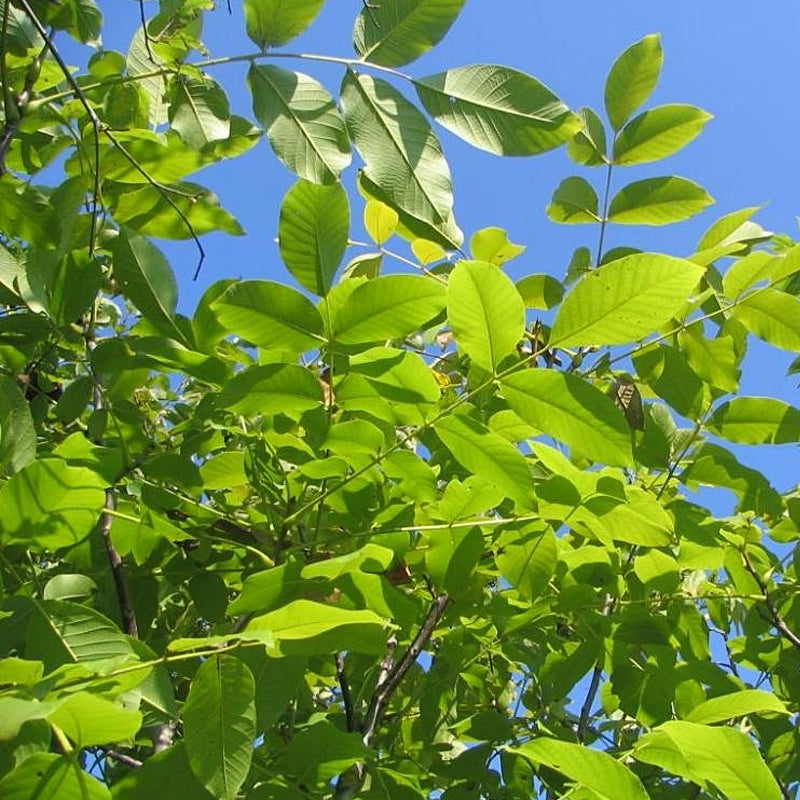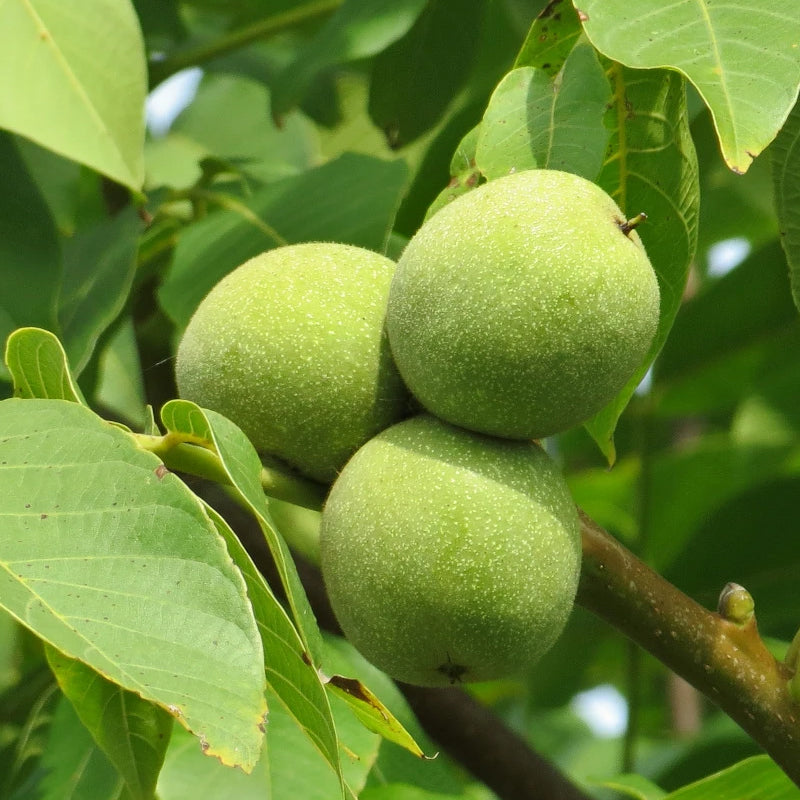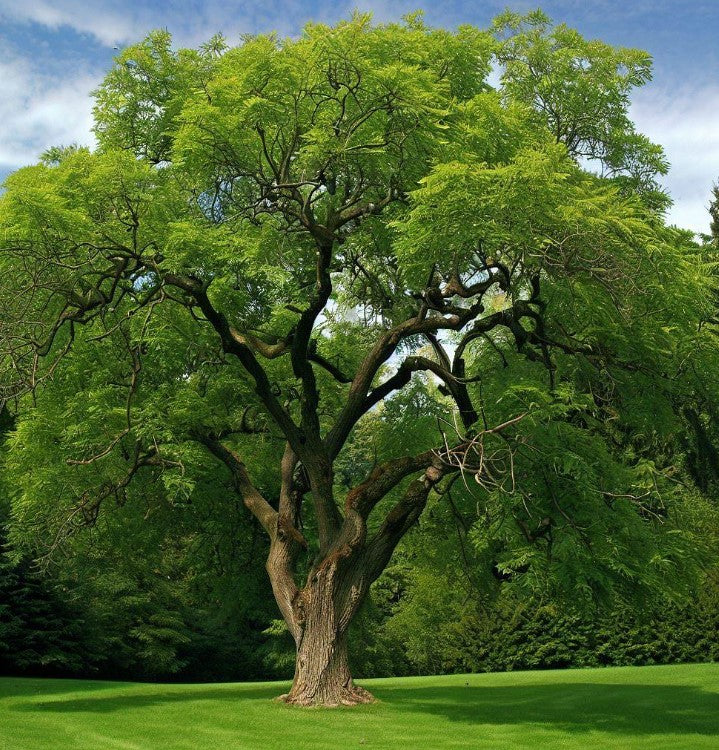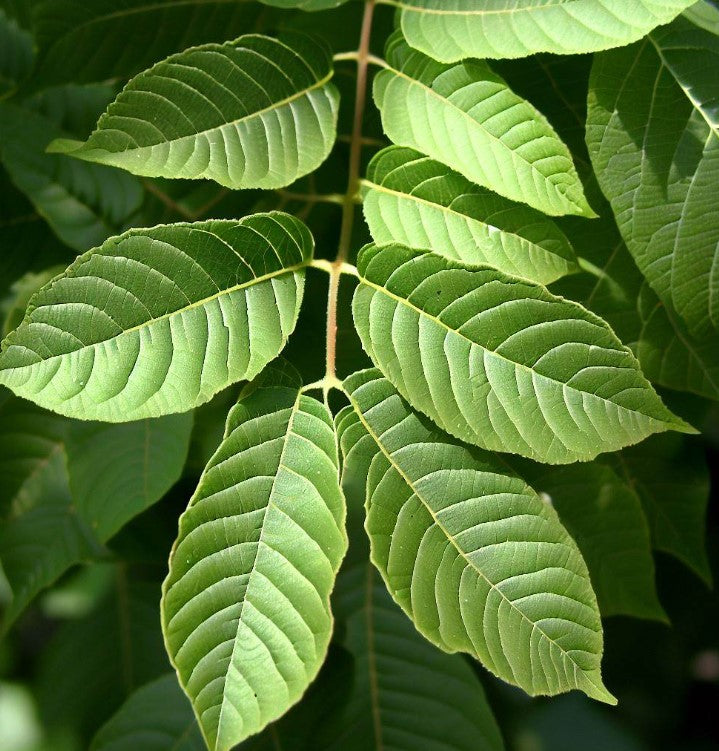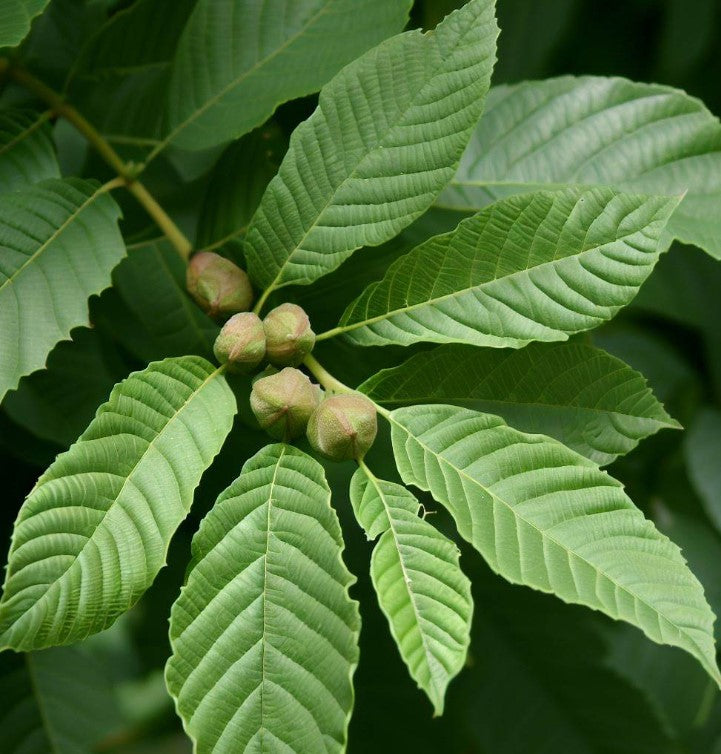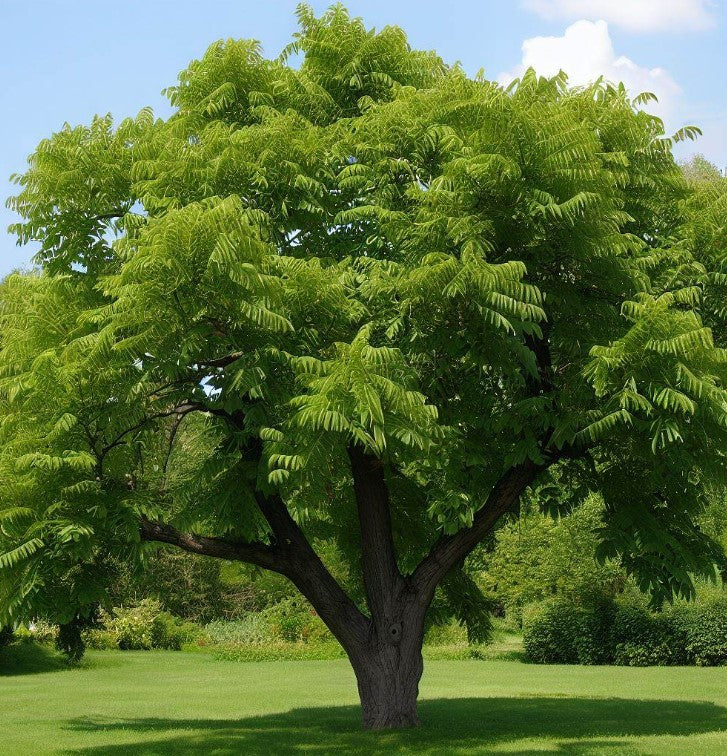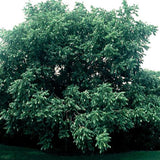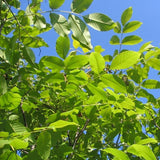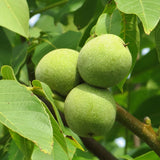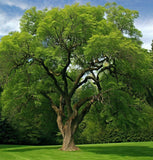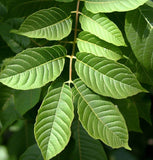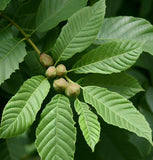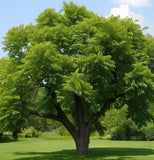Juglans regia Hardy Carpathian (Persian Walnut)
Juglans regia Hardy Carpathian (Persian Walnut) is a deciduous tree native to regions of Central Asia, including Iran and surrounding areas. The Hardy Carpathian is a specific cultivar of Juglans regia that is known for its improved cold hardiness, making it suitable for growing in colder climates. Here's some information about Juglans regia 'Hardy Carpathian':
Appearance: The Hardy Carpathian Persian Walnut is a medium to large-sized tree that can reach heights of 40 to 60 feet (12 to 18 meters). It has a spreading, rounded crown and a sturdy trunk. The leaves are pinnate, with 5 to 9 leaflets that are lance-shaped and finely toothed. The foliage is green during the growing season and turns golden yellow in the fall.
Nuts: Persian Walnuts, including the Hardy Carpathian cultivar, produce large, oval-shaped nuts that are enclosed in a thick, green husk. The nuts have a hard, smooth shell that requires cracking to access the edible kernel inside. Persian Walnuts are highly valued for their flavorful and nutritious nuts, which are commonly used in baking, cooking, and snacking.
Growing conditions: The Hardy Carpathian Persian Walnut is specifically selected for its improved cold hardiness compared to other cultivars of Juglans regia. It can tolerate colder temperatures and is generally hardy in USDA hardiness zones 4 to 8. It prefers full sun exposure for optimal growth and nut production. Well-drained soil is important to prevent waterlogged conditions, which can be detrimental to the tree's health.
Maintenance: Like other walnut trees, the Hardy Carpathian Persian Walnut requires regular watering, especially during dry periods, to establish strong root growth. Once established, it is relatively drought-tolerant. Pruning is typically minimal and is done to maintain the tree's shape, remove dead or damaged branches, and promote good airflow within the canopy.
Uses: The Hardy Carpathian Persian Walnut is primarily grown for its nuts. The flavorful kernels are highly sought after and can be used in various culinary applications. The wood of Persian Walnut trees is also valuable and is often used in furniture making, cabinetry, and veneer production. The tree itself is a beautiful addition to gardens, parks, and landscapes, providing shade and ornamental value.
Cultivation: The Hardy Carpathian Persian Walnut can be propagated through grafting or budding onto suitable rootstocks. This ensures that the desired traits of the cultivar are preserved. When growing Persian Walnuts, it's important to consider cross-pollination for optimal nut production. Having multiple walnut trees or compatible varieties in close proximity can enhance pollination and fruit set.
The Hardy Carpathian Persian Walnut is an excellent choice for those in colder climates who desire to grow Persian Walnuts. Its improved cold hardiness allows for successful cultivation and nut production in regions with harsh winters.
Botanical Name : Juglans regia Hardy Carpathian
Common Name : Persian Walnut
Height : 100- 115 ft
Spread : 50 ft
Germination Info : Seed requires 90-120 days cold moist stratification
Hardiness zone : 5-8
Average seed per ounce : Approx. 3

